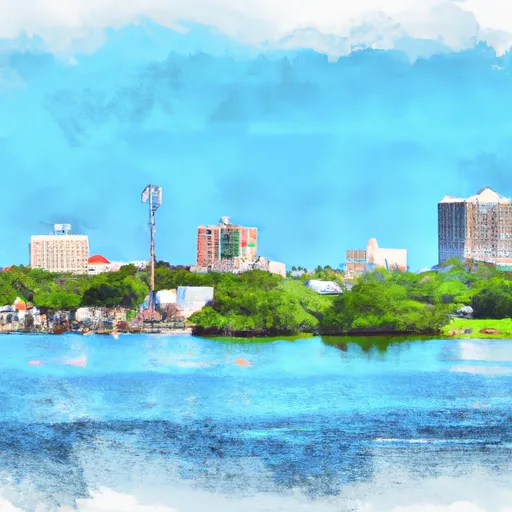-
 Snoflo Premium
Snoflo Premium
Get unlimited access to all our content
With no Ad interruptions! - Start Your Free Trial Login with existing account
Yankeetown
Eden Index
Climate
7.0
•
Recreation
3.5
•
Community
0.6
•
Safeguard
4.2/10

Yankeetown, Florida is a small coastal town located in Levy County, on the Gulf of Mexico. Known for its serene and natural surroundings, Yankeetown offers a unique climate and diverse hydrology constituents.
The town enjoys a subtropical climate, characterized by hot and humid summers, mild winters, and abundant rainfall throughout the year. Summers in Yankeetown are typically hot, with temperatures reaching into the 90s Fahrenheit, while winters are mild, with temperatures rarely dropping below 50 degrees Fahrenheit.
Yankeetown is surrounded by various water bodies, including the Withlacoochee River, the Gulf of Mexico, and numerous creeks and canals. These hydrology constituents provide ample opportunities for water-based activities such as boating, fishing, kayaking, and wildlife exploration. The Withlacoochee Gulf Preserve, located nearby, offers nature trails and educational opportunities to discover the diverse ecosystem of the region.
In addition to its natural beauty, Yankeetown hosts several annual events, including the Yankeetown Seafood Festival, where visitors can indulge in delicious local seafood while enjoying live music and other entertainment options. With its pleasant climate, abundant waterways, and outdoor recreation opportunities, Yankeetown is a haven for nature enthusiasts and those seeking a tranquil coastal getaway.
What is the Eden Index?
The Snoflo Eden Index serves as a comprehensive rating system for regions, evaluating their desirability through a holistic assessment of climate health, outdoor recreation opportunities, and natural disaster risk, acknowledging the profound impact of these factors on livability and well-being.
Climate Health Indicator (CHI): 7.0
Yankeetown receives approximately
1392mm of rain per year,
with humidity levels near 89%
and air temperatures averaging around
22°C.
Yankeetown has a plant hardyness factor of
9, meaning
plants and agriculture in this region tend to thrive here all year round.
By considering the ideal temperature range, reliable water supplies, clean air, and stable seasonal rain or snowpacks, the Climate Health Indicator (CHI) underscores the significance of a healthy climate as the foundation for quality living.
A healthy climate is paramount for ensuring a high quality of life and livability in a region, fostering both physical well-being and environmental harmony. This can be characterized by ideal temperatures, reliable access to water supplies, clean air, and consistent seasonal rain or snowpacks.
Weather Forecast
Streamflow Conditions
Tampa Bay
Area Rivers
Tampa Bay
Snowpack Depths
Tampa Bay
Reservoir Storage Capacity
Tampa Bay
Groundwater Levels
Recreational Opportunity Index (ROI): 3.5
The Recreational Opportunity Index (ROI) recognizes the value of outdoor recreational options, such as parks, hiking trails, camping sites, and fishing spots, while acknowledging that climate plays a pivotal role in ensuring the comfort and consistency of these experiences.
Access to outdoor recreational opportunities, encompassing activities such as parks, hiking, camping, and fishing, is crucial for overall well-being, and the climate plays a pivotal role in enabling and enhancing these experiences, ensuring that individuals can engage in nature-based activities comfortably and consistently.
Camping Areas
| Campground | Campsites | Reservations | Toilets | Showers | Elevation |
|---|---|---|---|---|---|
| Oleno State Park | None | 77 ft | |||
| Fort Desoto County Park | 238 | 3 ft | |||
| Stephen Foster State Park | None | 97 ft |
Catastrophe Safeguard Index (CSI):
The Catastrophe Safeguard Index (CSI) recognizes that natural disaster risk, encompassing floods, fires, hurricanes, and tornadoes, can drastically affect safety and the overall appeal of an area.
The level of natural disaster risk in a region significantly affects safety and the overall livability, with climate change amplifying these risks by potentially increasing the frequency and intensity of events like floods, fires, hurricanes, and tornadoes, thereby posing substantial challenges to community resilience and well-being.
Community Resilience Indicator (CRI): 0.6
The Community Resilience Indicator (CRI) recognizes that education, healthcare, and socioeconomics are crucial to the well-being of a region. The CRI acknowledges the profound impact of these elements on residents' overall quality of life. By evaluating educational resources, healthcare accessibility, and economic inclusivity, the index captures the essential aspects that contribute to a thriving community, fostering resident satisfaction, equity, and social cohesion.

